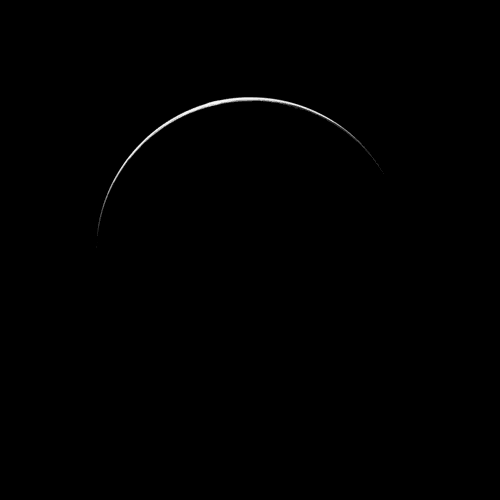When Hamlet asked, “To be, or not to be,” he wrestled with the very essence of existence. Today, in a world reshaped by artificial intelligence, a new but oddly familiar dilemma emerges: To GPT, or not to GPT. Creators everywhere must decide whether to embrace this mechanical muse or cling to the raw fire of human imagination.
The allure of AI is hard to resist. GPT and its cousins can take scattered sparks of thought and weave them into coherent, sometimes dazzling, form. For many, it feels like being handed a magic brush, suddenly anyone can sketch, sing, or spin a story. To GPT, then, can feel like an obvious yes.
But beneath the shine lies a tension. The art of algorithms is not born of lived experience; it’s an imitation sculpted from patterns, not passion. AI cannot fall in love, lose a friend, or stare out at the ocean wondering if the seagulls are judging it. Can its creations ever carry the same authenticity as work shaped by human struggle? Relying too heavily on AI can feel like reciting someone else’s lines instead of finding your own voice.
Of course, the question of authorship is not new. Even Shakespeare poster child of human genius has been shadowed by doubt. For centuries, skeptics have asked whether the modest man from Stratford-upon-Avon truly penned those immortal plays. The debate still simmers, reminding us that questions of creative ownership stretch across time. Just as scholars question whether Shakespeare was the true author of his works, we now ask whether art created with AI can be considered fully authentic. In both cases, the issue is less about the name on the page and more about the meaning the work carries.
Seen this way, maybe authenticity isn’t fixed at all but fluid, reshaping as tools evolve. Painters once fretted about photography, musicians about synthesizers, writers about word processors. Yet all became part of the artistic landscape. AI, too, may be less an impostor and more a collaborator—a strange new bandmate who knows every scale but has never once fallen in love. The human mind still decides what endures and what fades. Authenticity lies not in the source of the words, but in how we choose to wield them.
So perhaps the question isn’t just to GPT or not to GPT. It’s about purpose, integrity, and what creativity means when silicon meets synapse. If AI replaces thought, art risks losing its soul. But if it sparks ideas, ignites play, or nudges us past the dreaded blank page, maybe it signals not the end but a new beginning.
If Hamlet lived today, he’d probably workshop his soliloquy with a chatbot before taking the stage. But the real test, then as now, remains the same: Will I create with honesty? With intention? With humanity?
To GPT, or not to GPT, that’s still the question. But the better one might be how do we stay human in the answer?
Author’s Note
Hamlet’s tragedy was indecision. Ours may be the opposite: choosing everything, all at once with a single click. The irony is that even with infinite suggestions at our fingertips, the burden of meaning still falls on us. The ghost doesn’t vanish, it just shows up with autocomplete.
As for me, I’ll be doing what I always do after writing one of these essays: closing the laptop, staring at the wall for a moment, and then reaching for another coffee. Because some things, thankfully, remain un-automated.
GPTを使うか、使わざるか
ハムレットが「生きるべきか、死ぬべきか」と問いかけたとき、彼は存在の根源に悩んでいました。今日、人工知能によって形作られた世界では、新たにしてどこか懐かしいジレンマが現れました。それが「GPTを使うか、使わざるか」。クリエイターたちはこの機械のミューズを受け入れるべきか、それとも人間の生の炎を握りしめ続けるべきか、決断を迫られているのです。
AIの魅力は抗い難いものです。GPTやその仲間たちは、散らばった思考の火花を一つにまとめ、時に眩い形に織り上げます。多くの人にとって、それはまるで魔法の筆を手にしたような感覚。突然、誰もが絵を描き、歌い、物語を紡げるようになる。だから、「GPTを使う」と答えるのは自然な流れに思えます。
しかし、その輝きの裏には緊張感があります。アルゴリズムの技は、体験に根差したものではなく、パターンから模倣されたものにすぎません。AIは恋に落ちることも、友を失うことも、海を眺めてカモメにジャッジされているか悩むこともできません。そういった人間の葛藤を経て形作られた作品と同じリアリティを持てるのでしょうか? AIに頼り過ぎることは、誰かの台詞を暗唱するようなもので、自分の声を見つけることから遠ざかる気がします。
もちろん、創作の「作者」であることの問題は新しいものではありません。シェイクスピアですら、人類の天才の象徴として疑念に包まれてきました。何世紀にもわたって、ストラトフォード・アポン・エイヴォンという控えめな男が、本当にあの不朽の戯曲をしたためたのか疑問視されてきたのです。その議論は今もくすぶり続け、創造的所有権の問いが時を超えて続くことを教えてくれます。ちょうどシェイクスピアが真の作者だったのか問われるのと同じように、今、AIと共に生み出されたアートは本物と言えるのか問われています。両者に共通するのは、名前ではなく、その作品が持つ意味が問題なのだということです。
そう考えると、「本物らしさ」は決して固定されたものではなく、道具の進化とともに形を変えていくものかもしれません。かつて画家たちは写真術を恐れ、音楽家たちはシンセサイザーに戸惑い、作家たちはワープロに不安を抱きました。しかしすべて、それらは芸術の風景に溶け込んでいきました。AIもまた、偽物ではなく協力者かもしれません。すべての音階を知りながら、一度も恋に落ちたことのない、ちょっと変わった新バンドメンバーのような存在。結局、何を残し、何を忘れるかを決めるのは人間の心です。真実らしさは言葉の出所ではなく、それをどう使うかにあります。
だから、問いは単なる「GPTを使うか使わないか」ではないのかもしれません。目的、誠実さ、そしてシリコンとシナプスが出会ったときの創造性の意味についての問題です。AIが思考の代替になるなら芸術は魂を失う危険があります。でも、その力でアイデアに火をつけ、遊び心を刺激し、恐怖の白紙ページを乗り越えられるなら、それは終わりではなく新たな始まりの合図かもしれません。
もしハムレットが今を生きていたら、舞台に立つ前にチャットボットと独白を練習しているかもしれません。でも、本当の試練は昔も今も変わらないのです。「私は正直に創るのか?意図を持って創るのか?人間らしさをもって創るのか?」ということ。
GPTを使うか使わざるか、それはまだ問いですが、むしろ問うべきは「その答えの中でどうやって人間らしさを保つか」ではないでしょうか。
作者のことば
ハムレットの悲劇は優柔不断でした。私たちの悩みはその逆かもしれません。ワンクリックであらゆるものを同時に選べること。皮肉なことに、無限の提案が目の前にあっても、意味を背負うのは私たち自身なのです。亡霊は消えず、ただオートコンプリートとともに姿を現すだけ。
私はいつものように、このエッセイを書き終えたら、パソコンを閉じて、壁をじっと見つめ、そしてまたコーヒーを手に取るでしょう。幸いなことに、まだ自動化されていないものもあるのです。


Leave a Reply